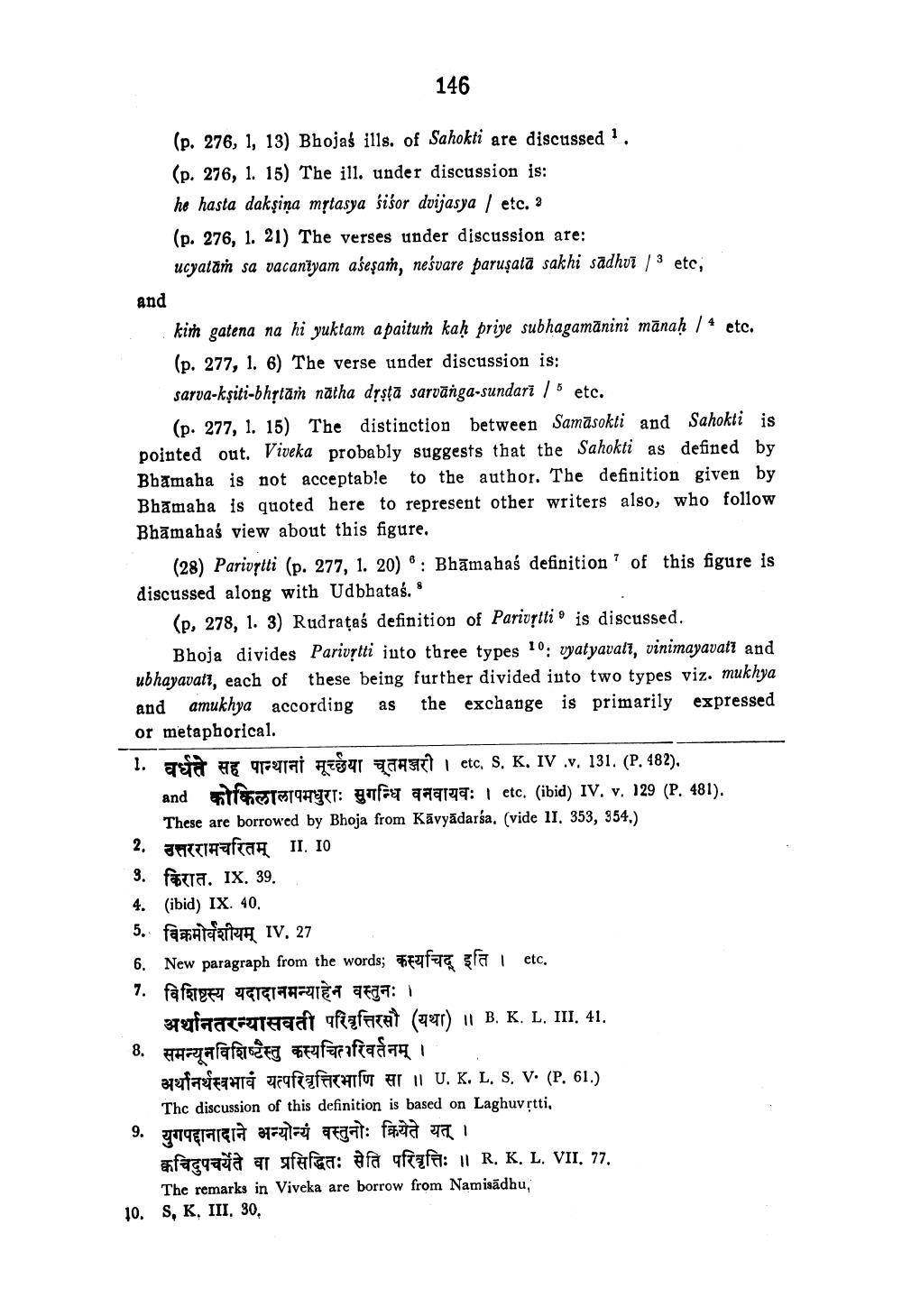________________ 146 (p. 276, 1, 13) Bhojas ills. of Sahokti are discussed ? . (p. 276, 1. 15) The ill. under discussion is: he hasta daksina matasya sisor dvijasya / etc. 3 (p. 276, 1. 21) The verses under discussion are: ucyatam sa vacaniyam asesar, nesvare parusata sakhi sadhvi / 3 etc, and kim gatena na hi yuktam a paitum kah priye subhagamanini manah / 4 etc. (p. 277, 1. 6) The verse under discussion is: sarva-ksiti-bhrtam natha drsta sarvanga-sundari / etc. (p. 277, 1. 15) The distinction between Samasokti and Sahokti is pointed out. Viveka probably suggests that the Sahokti as defined by Bbamaha is not acceptable to the author. The definition given by Bhamaha is quoted here to represent other writers also, who follow Bhamahas view about this figure. (28) Parivytti (p. 277, 1. 20) : Bhamahas definition of this figure is discussed along with Udbhatas. (p, 278, 1. 3) Rudratas definition of Parivitti " is discussed. Bhoja divides Parivrtti into three types 10: vyatyavali, vinimayavati and ubhayavati, each of these being further divided into two types viz. mukhya and amukhya according as the exchange is primarily expressed or metaphorical. 1. asta a great hesa Ft | etc. S. K. IV .v. 131. (P. 482). and F T THYTT: gufiy qaarga: | etc. (ibid) IV. v. 129 (P. 481). These are borrowed by Bhoja from Karyadarsa. (vide 11, 353, 354) 2. IFTIHAH II. 10 9. facra. IX. 39. 4. (ibid) IX. 40. 5. fantastigh IV, 27 6. New paragraph from the words; Frafa sfa l etc. 7. विशिष्टस्य यदादानमन्याहेन वस्तुनः / stefaacriteaat afafaret (7241) 11 B. K. L. III. 41. 8. समन्यूनविशिष्टैस्तु कस्यचितारिवर्तनम् / 24fade Hra naftafetarfor er II U. K. L. S. V. (P. 61.) The discussion of this definition is based on Laghuvitti, युगपदानादाने अन्योन्य वस्तुनोः क्रियेते यत् / #fagya at sfarga: fa fafe: || R. K. L. VII, 77. The remarks in Viveka are borrow from Namisadhu, 10. S, K, III, 30,




